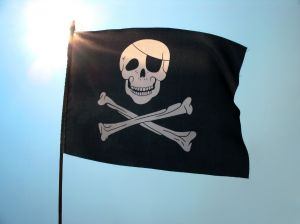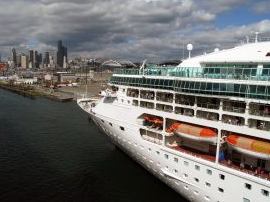 After last week’s reports that a passenger cruise ship was the target of an attempted pirate attack in the Gulf of Aden, it has come to light that two other cruise ships have also been threatened by pirates in recent days in the same area.
After last week’s reports that a passenger cruise ship was the target of an attempted pirate attack in the Gulf of Aden, it has come to light that two other cruise ships have also been threatened by pirates in recent days in the same area.
On November 30, it was widely reported that Oceania’s Nautica was chased by bandits in speedboats while cruising in the waters near Oman, but it managed to successfully outrun them.
On Friday German media reported that suspected pirates also targeted the Astor, a 492-passenger ship operated by Transocean Tours on November 28, though it is unclear why the incident was not reported sooner.
The attackers were chased off by a German naval vessel patrolling the area.
Just today Hapag-Lloyd Container Line announced that it is in the midst of evacuating several hundred passengers from one of its passenger ships sailing in the Gulf of Aden, citing unspecified security threats. The Columbus was on a 19-day journey from Genoa, Italy to Dubai when it was disembarked in an undisclosed location.
This spate of attempted attacks on passenger liners highlights not only the newfound brazenness of the pirates, most of whom are presumed to hail from the dysfunctional Somali state, but it also raises questions about the safety of passenger ships sailing in the waters off east Africa.
Though piracy in the area has increased greatly in the past year, bandits had primarily been targeting commercial cargo ships and other non-leisure vessels. Before November 28, 2008 there was only one known incident of a cruise ship being targeted, and that was in 2003.
 So far, the reaction of the cruise lines has been consistent, and muted.
So far, the reaction of the cruise lines has been consistent, and muted.
PeterGreenberg.com contacted representatives from Cunard, Holland America, Princess, Regent, and Seabourn. All responded that, so far, they had no plans to change their itineraries, and that they would be “keeping an eye on the situation.” None of the companies mentioned adding more on-board security measures.
The cruise industry also seems to be taking a wait-and-see approach.
The Cruise Lines International Association (CLIA) released a statement which seemed to be aimed at reassuring the public, saying that member ships “follow international guidelines concerning regular contact with military forces patrolling the Gulf of Aden, speed, maneuvering, and enhanced lookouts. All CLIA members have thorough security protocols in place including anti-piracy measures that help to ensure the safety of their passengers and crew while they enjoy a cruise vacation.”
But is this enough?
Doug Burnett, a maritime lawyer and retired naval officer, has publicly warned that attacks will become even more common. Apparently the pirates are sophisticated enough to know that most countries’ rules of engagement do not allow warships to fire on bandits proactively. They also know that their small skiffs can often approach large ships undetected and elude radar.
However, the downside to targeting cruise ships is that these vessels are faster than cargo ships and therefore better able to outrun a pirate boat. Also, the sheer number of passengers and crew mean that there are potentially more eyes to spot and possibly overpower bandits should they gain access to a ship.
Until such time as cruise lines figure out how to combat this growing scourge, experts suggest that they cruise the Gulf of Aden at night, when pirates are less likely to attack, or wait for a naval escort to accompany them.
Related Links: USA Today, Der Spiegel, USA Today
By Karen Elowitt for PeterGreenberg.com.
Updated related links on PeterGreenberg.com:
- New: Interview With Rick Sasso, MSC Cruises President, on PGW Radio
- MSC Melody Cruise Ship Repels Somali Pirates
- Pirates of the Indian Ocean: An Interview With Col. Jack Jacobs, Military Analyst
- Captain Rescued, Somali Pirates Threaten Revenge After Deaths
- Pirates of Somalia No Pirates of the Caribbean
- MS Nautica Cruise Ship Evades Somali Pirates
- Pirates Grow Bolder, Target Cruise Ships
- The White House Takes on the Pirates
- Somali Pirates Seize More Ships
- The Real-Life Pirate Hunters
- Peter’s Blog: Bangkok, Pirates and Sonic Blasters












